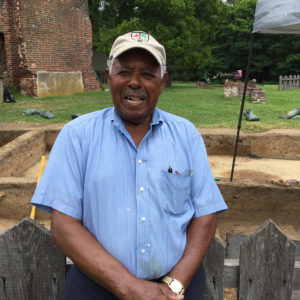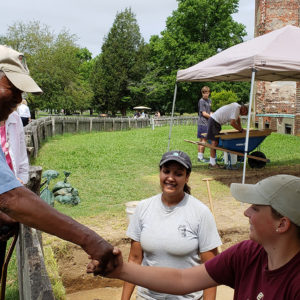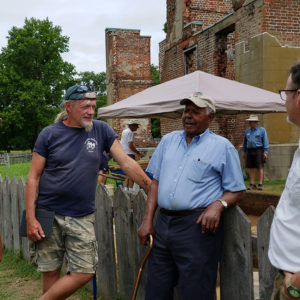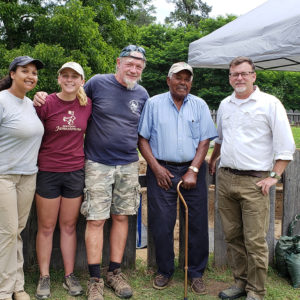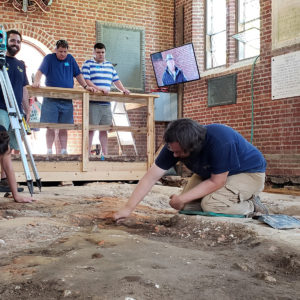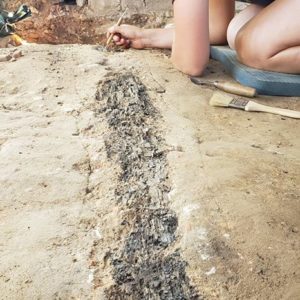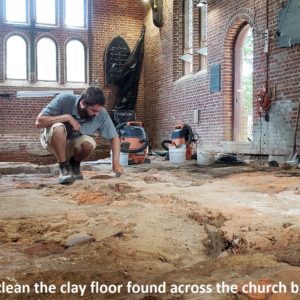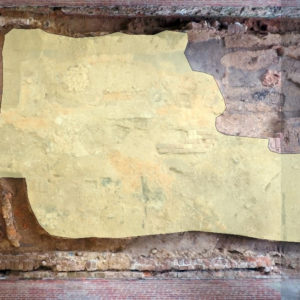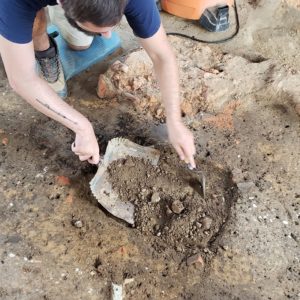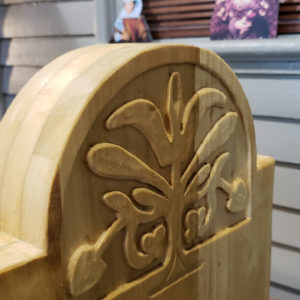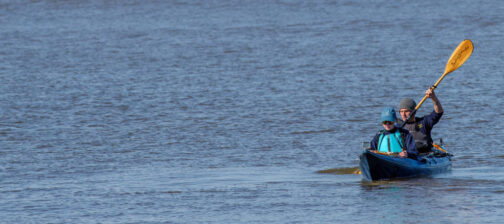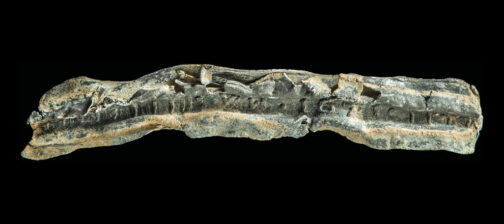In June, the Rediscovery archaeologists at the Angela Site in New Town opened new units in their search for Captain William Pierce’s house, where one of the first documented African women, Angela, lived and worked. Beforehand they studied the maps and notes from previous excavations of the area in order to direct their new investigation. Early in the project, they learned that some of the Angela Site was first excavated from the mid-1930s until the early 1940s by African-American men employed by the segregated Civilian Conservation Corps (CCC).
Although the Rediscovery archaeologists have not located any of the original excavators, they recently met a gentleman from Surry County, Virginia who worked with some of them at the Williamsburg CCC Camp. His name is Mr. Purcell Bailey, and he is just shy of 99 years of age. He visited Historic Jamestowne in June and shared memories about his CCC service.
Bailey was excited to visit the Angela Site and to meet the archaeologists. He joked that he did not have the opportunity to dig at Jamestown because, unfortunately, he “was too smart [to dig] and ended up working in the office.” Bailey noted that the CCC decided whether a man dug sites or worked on the Colonial Parkway. His job was in the camp office and mainly involved organizing and scheduling the classes and activities available to the workers. The CCC offered classes because many of the men and boys could not read or write. Bailey mentioned that he brought the men lunch a couple of times while they were working at Jamestown. The Rediscovery crew laughed hard as he recalled that the CCC men at Jamestown were “digging and arguing a lot.”
“The Jamestown Excavator,” a newsletter written and published by the men at the CCC camp, included information relevant to all CCC personal. It was also abuzz with activities, sports news, artwork, and even a gossip column. In the March 1940 newsletter about a game of pool, Bailey is described as one of the “future aces on the green felt.” However, it was the victories of the baseball team that he captained that Bailey most fondly remembered. He said one season they won enough games to play in the championship in Gettysburg. “We didn’t win, but at least we got a trip to Pennsylvania,” Bailey happily recalled.
Meanwhile, the Rediscovery archaeologists working in the 1906 Memorial Church focused on cleaning, photographing, and mapping the features uncovered in the nave, or body, of the church since excavations began last year. From the beginning, Project Supervisor Mary Anna Hartley has spent endless hours combing through the first excavators’ reports, letters, and photographs to learn how their excavations altered the site. According to the early documents, the north half of the church was dug extensively, and some burials in the west end of the central aisle were tested. However, APVA founder Mary Jeffrey Galt reported that everything south of the central aisle remained unexcavated.
Once the entire body of the church was re-exposed in 2017, archaeologists confirmed that more was preserved to the south. The team delicately shaved the last few inches of backfill and rubble left by APVA (Preservation Virginia) excavators in 1897-1902 and attempted to make sense of the fragmented floor.
Archaeologists discovered that most of the church floor in the nave was originally covered with a thin lens of clay. Careful cleaning of the clay revealed areas of burned wood, possibly indicating the location of floor joists for wooden floor boards or pews associated with the 1640s brick church. The burned wood is likely evidence of the September 1676 fire that occurred during Bacon’s Rebellion; this is the only documented burning of a church in this location. It is hoped that mapping will reveal the wood’s original form and indicate its intended purpose.
Archaeologists also found eight modern postholes which cut through several features across the church nave. These are likely related to a barn structure built by the APVA (Preservation Virginia) in 1901-1902, the completion of which is mentioned in a letter from APVA Jamestown Committee Chairman Lucy Parke Chamberlayne Bagby to Galt in March 1902. The team plans to excavate a few of these modern postholes to obtain profiles of the different churches’ floors at various locations across the church.
Concurrent with the Memorial Church excavations, members of the Rediscovery staff are planning new exhibitions and programming for the church in 2019. Craftsmen from the Ford’s Colony Woodworkers Club are helping, and in June they delivered the prototype for pews that will be used in the exhibition. Six pews in all will be constructed and installed in the choir of the 1617 church. Made with our visitor and programming needs in mind, their designs are based on examples researched by Rediscovery staff and professional colleagues.
related images
- Mr. Purcell Bailey visits the Angela Site at Historic Jamestowne, where some of his fellow Civilian Conservation Corps (CCC) servicemen excavated in the 1930s-1940s.
- Purcell Bailey meets archaeologists at the Angela Site
- Mr. Bailey shared his memories about his time with the CCC. Although he mainly worked in the Williamsburg Camp Office, Bailey visited Jamestown a few times to bring the excavators their lunch. He said he remembers that they were “digging and arguing a lot!”
- Mr. Bailey with Jamestown Rediscovery archaeologists at the Angela Site (L-R) Chardé Reid, Katie Dowling, Lee McBee, Purcell Bailey, and Dave Givens
- Anna Shackleford and Les Jennings trowel the clay in the church floor as Bob Chartrand maps some of the features to the east
- Kaitlyn Fitzgerald uncovers burned wood in the church floor
- Archaeologists trowel and clean the clay floor found across the church
- Highlighted above is the lens of clay covering most of the church floor
- Bob Chartrand discovers one of the 1902 barn postholes that cut through the church floor
- Archaeologists found 8 modern postholes (highlighted in blue) that likely relate to a barn built over the site in 1902.
- Archaeologists found 8 modern postholes that likely relate to a barn built over the site in 1902.
- This postcard shows the barn built by the APVA in 1902 to cover the church excavations
- Members of the Ford’s Colony Woodworkers pose with the first pew for the new church exhibit. The pew is one of six that will be installed.
- Close-up of the carving on the pew end



